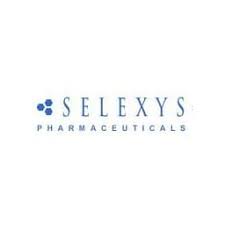Although sickle cell disease affects approximately 100,000 Americans—more than the number of Americans affected by cystic fibrosis and hemophilia combined—these individuals are much less likely to receive comprehensive care than people with other types of genetic disorders. The most common complications of sickle cell disease are debilitating pain events that can last weeks, which are often treated with opioids, a both costly and potentially dangerous treatment.
In the early 2000s, Oklahoma start-up company Selexys set out to find a better way to help sickle cell disease patients manage pain. “A lot of drugs will just have a minor impact on a biochemical endpoint but the Selexys approach was to actually modify the disease process,” says Scott Rollins, who became CEO of the company in 2008.
After successfully building the pharmaceutical company Alexion in Connecticut, Rollins was ready to move back to Oklahoma. He knew Selexys had promising initial results but needed a funding plan. As CEO, he applied for a Small Business Innovative Research (SBIR) grant as he had for Alexion, this time through the National Heart, Lung, and Blood Institute. Selexys was awarded a Fast-Track Phase II SBIR in 2009, which helped the company develop a sickle cell disease drug, run clinical trials, and eventually begin manufacturing.
The drug works by reducing the painful clots that occur when red blood cells “sickle” and stick to the vascular lining. By targeting molecules that help those cells stick, the Selexys drug improves blood flow. A Phase 2 clinical trial showed that the drug reduced pain crises by 50 percent “and in the more serious patients, it reduced crisis levels by 75 to 80 percent. It was a home run type result,” says Rollins.
But with only eight employees, Selexys needed a partner to approve, market, and distribute the drug worldwide. The pharmaceutical company Novartis had previously gained the right to acquire Selexys in 2012. Once the positive Phase 2 trial results were released, Novartis seized the opportunity to acquire Selexys in a deal valued at approximately 665 million dollars.
The Selexys-developed therapeutic received FDA approval in 2019 and is currently marketed and sold in the U.S. under the trade name Adakveo. It received approval by the European Commission in 2020.
“Sickle cell disease is a devastating disease. Having a drug that substantial reduces that burden is life-changing for those patients. The impact on the healthcare system and on the individual patients’ lives is tremendous,” says Rollins, who credits the SBIR program with helping launch Selexys. “The most difficult part to fund in an early company is that early pre-clinical advocacy data, preclinical toxicology data and getting a drug into clinical trials. Having a source to do that with an SBIR grant...that’s critical.”







